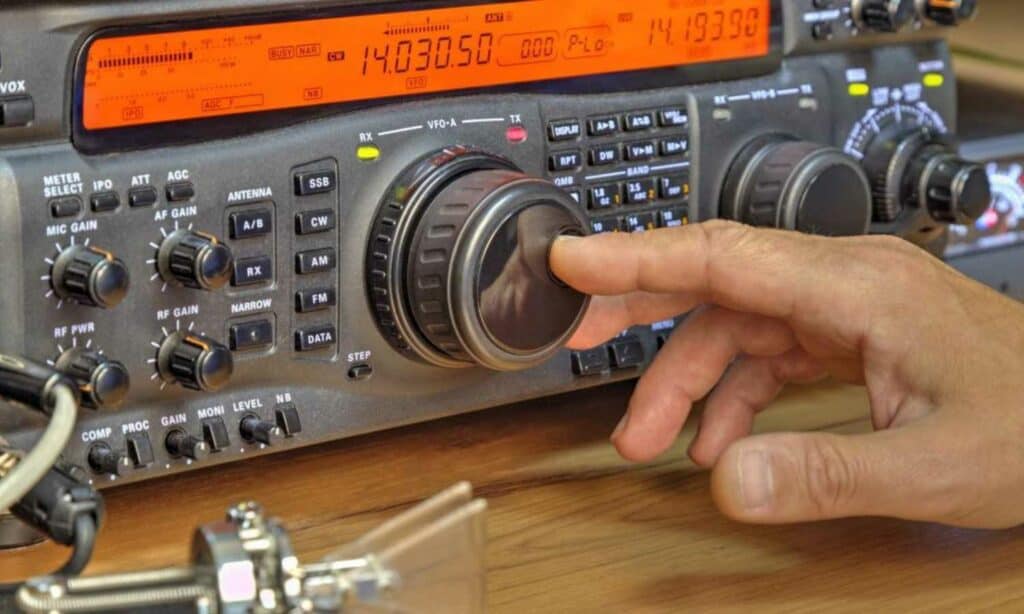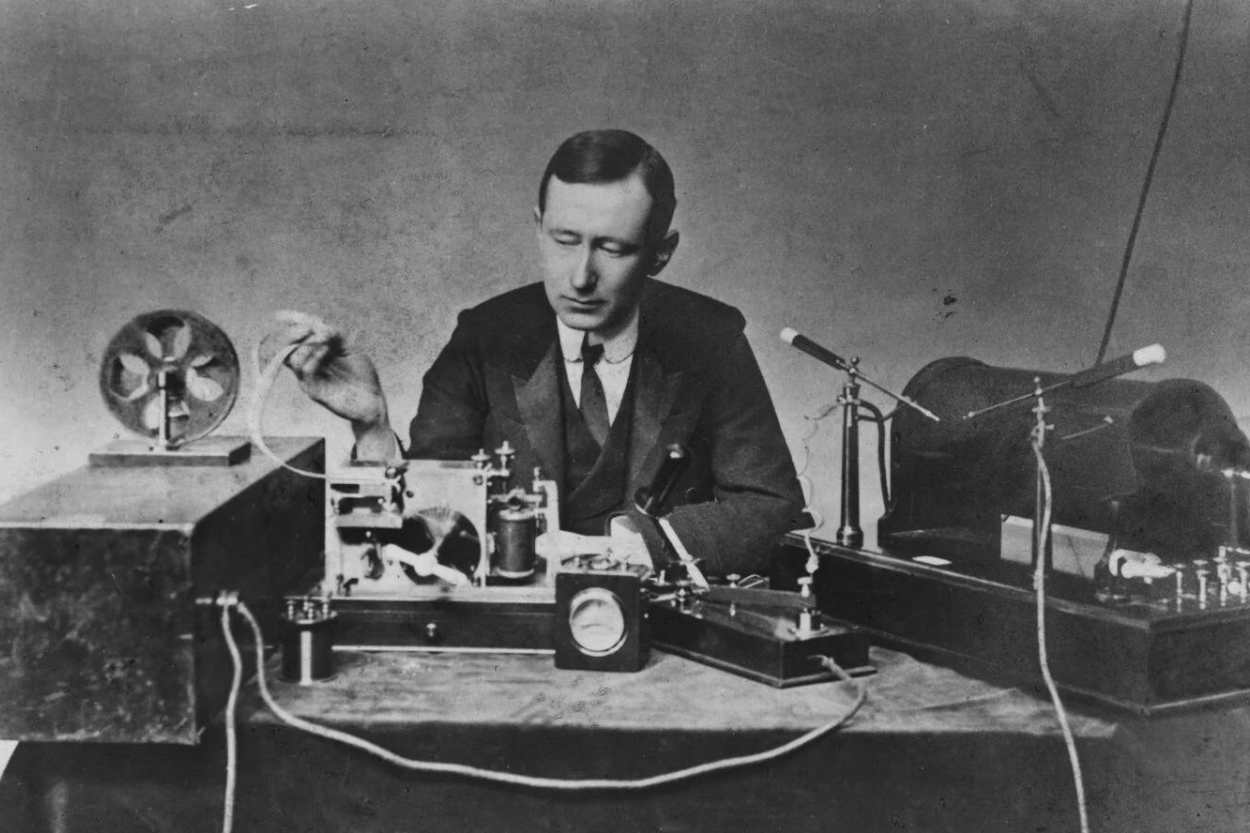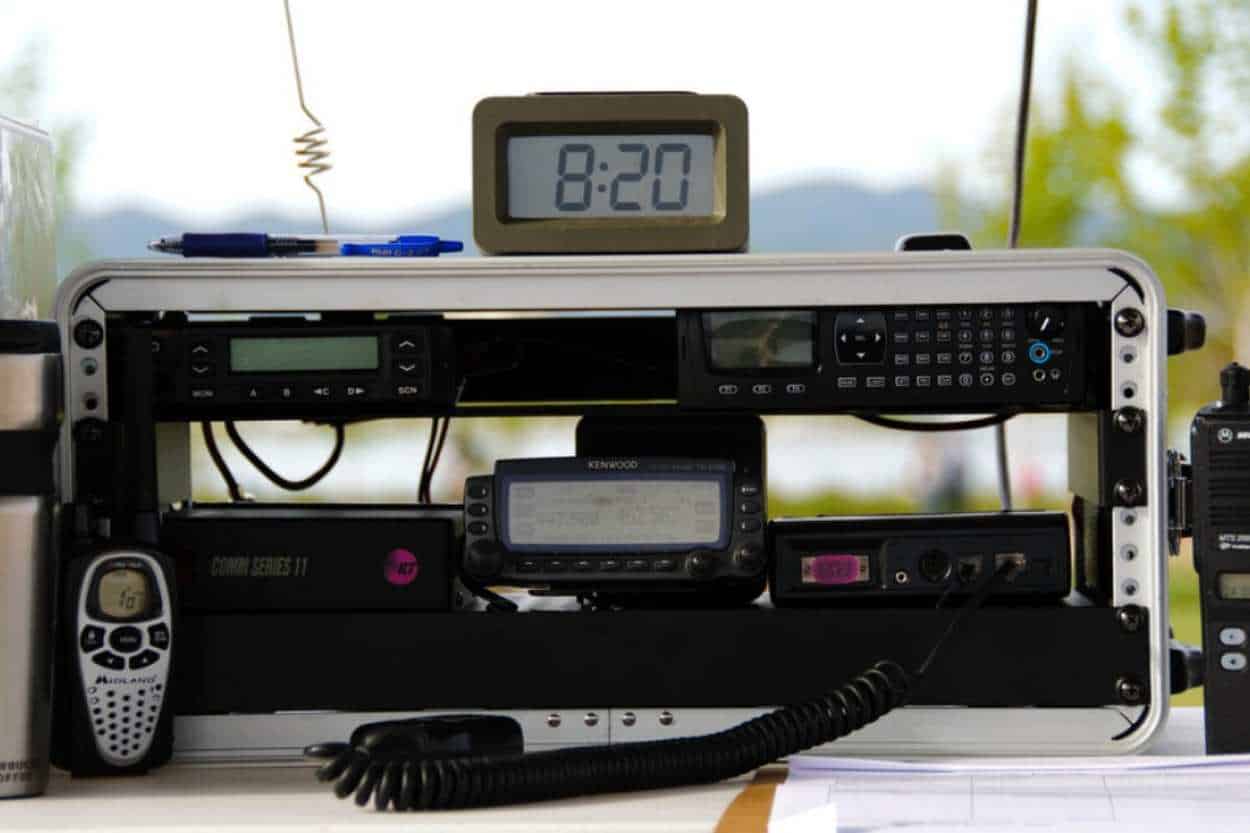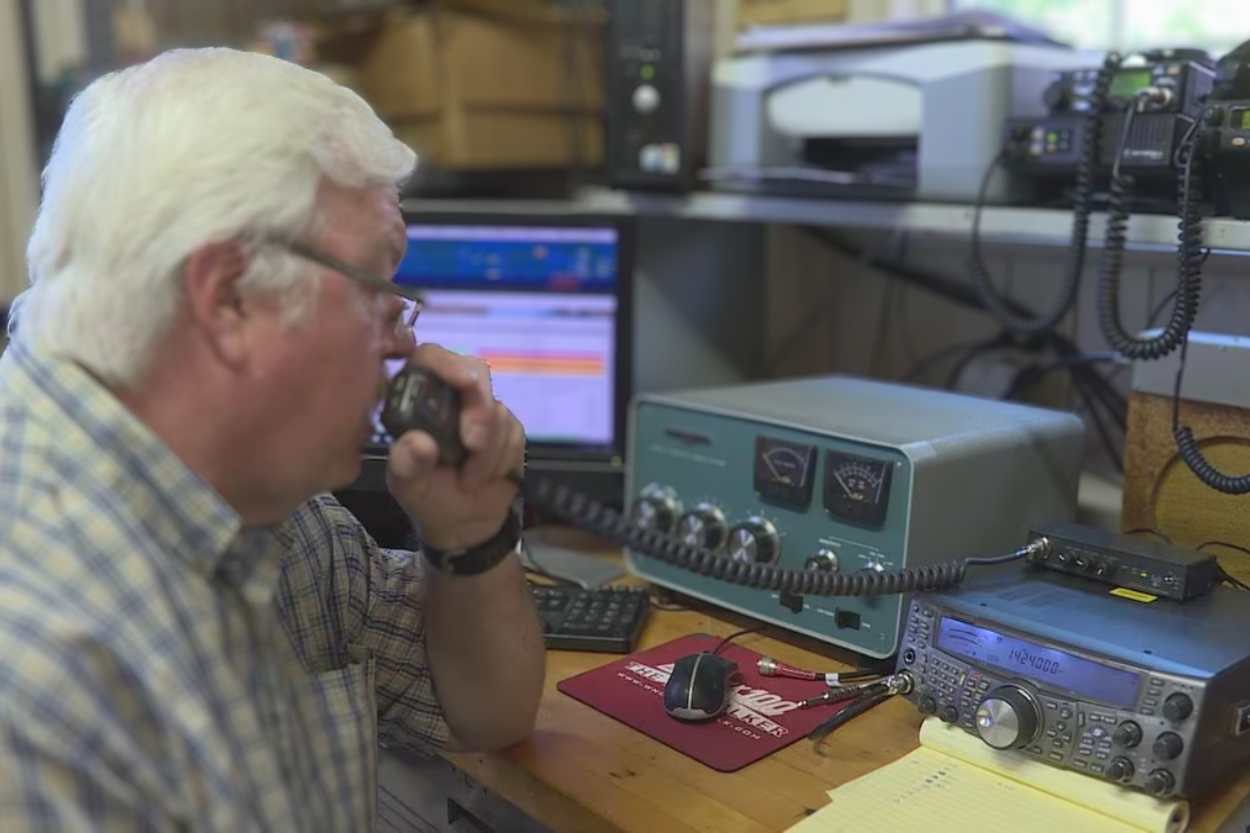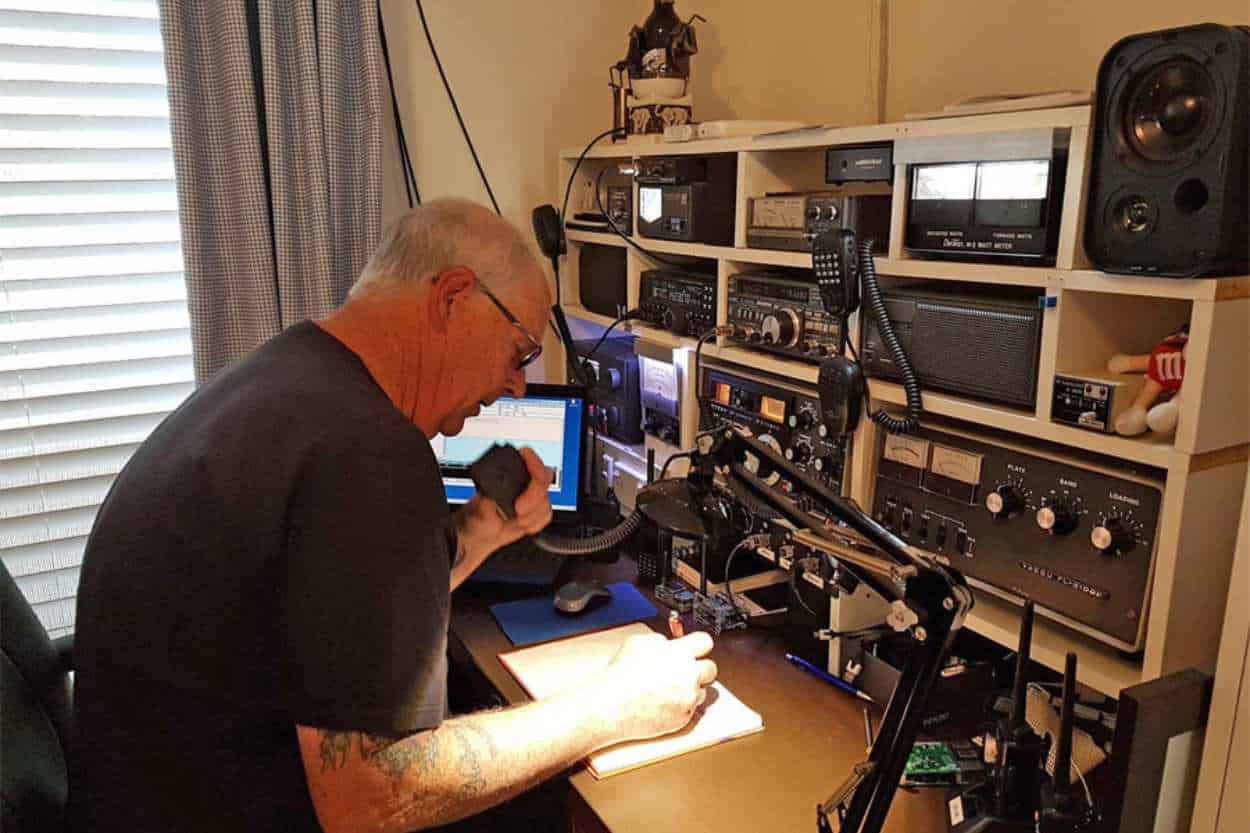Ham radio, or amateur radio, is a form of communication and hobby that connects people across distances without the need for internet or cellular networks. It involves the use of designated frequencies for transmitting voice, text, and data. Whether you’re reaching out to fellow enthusiasts across town or around the globe, your ham radio set becomes a gateway to a unique community bonded by electromagnetic waves.
History of Ham Radio
Ham radio, or amateur radio, has a rich history that dates back to the late 19th century. It involves pioneering individuals and developments that transitioned radio from a commercial and military medium to one accessible to enthusiasts.
Origins and Inventors
Guglielmo Marconi, often recognized as the father of modern radio, played a pivotal role in ham radio history. By the end of 1895, Marconi had developed the first practical radio system, opening doors for wireless communication. In parallel, individuals like Albert Hyman, Bob Almy, and Reggie Murray of the Hyman-Almy-Murray trio contributed to the amateur radio community. Their passion and advancements made way for all amateurs, who came to be known colloquially as “hams.”
Development of Amateur Radio
Amateur radio flourished with the publication of Modern Electrics magazine in 1908, which grew the hobby by disseminating knowledge and inspiring many. Clubs such as the Wireless Association of America further supported the expansion of the amateur radio community. Inventions by Edwin Armstrong, like the regenerative circuit, significantly enhanced radio reception and transmission, fueling the growth of ham radio among tech enthusiasts. By the 1920s, amateur operators were communicating across continents, marking the onset of ham radio as a global means of connection.
Technical Foundations
Before diving into the technicalities of ham radio, it’s essential to grasp the basics of frequency bands, modulation modes, and the hardware used — antennas and equipment — which are the building blocks of effective amateur radio operation.
Understanding Frequency Bands
Frequency bands are specific ranges of frequencies designated for ham radio use. You’ll operate on amateur bands ranging from 1.8 MHz to 250 GHz, each with distinct characteristics and regulations. When referring to bands, you may hear terms like “2 meter” or “70 cm,” which relate to the wavelength of the signals within those bands. It’s vital to know that the bandwidth you are allocated will depend on your license class, with certain privileges extending for advanced licenses.
Modulation Modes
Modulation is how your voice, data, or video is encoded onto radio waves. Three primary modes you’ll commonly encounter are AM (Amplitude Modulation), FM (Frequency Modulation), and SSB (Single Side Band). In AM, the signal strength varies to carry information, whereas in FM, the frequency slightly fluctuates around a central point. SSB is a form of AM but reduces the bandwidth and power requirements by transmitting only one side of the carrier frequency. Other modes, such as RTTY (Radio Teletype), encode data for communication.
Antennas and Equipment
Your antenna is crucial as it radiates and receives radio signals. Antennas come in various forms, each tailored to specific frequency bands and uses. The basic equipment needed includes a transmitter, a receiver (or a transceiver which does both), a power battery or power supply, and often a tuner to match the antenna system’s impedance. Keeping the electronics core such as the capacitor in good condition ensures your equipment operates efficiently. Regular maintenance and understanding of your gear lead to better performance and can be the difference between making a clear contact or not.
Licensing and Regulation
In the sphere of amateur radio, your ability to operate a station and communicate across frequencies is contingent upon obtaining the proper license. This process is overseen by regulatory bodies like the Federal Communications Commission (FCC) in the United States.
FCC Requirements
The FCC mandates that all amateur radio operators in the United States undergo a licensing procedure to operate on the airwaves legally. Your journey to becoming a licensed amateur operator involves mastering a range of topics from technical know-how to legal regulations. The FCC offers different levels of licenses, each advancing your privileges concerning frequency and mode of operation.
- Technician Class License: Grants access to all VHF/UHF Amateur bands and limited operations on certain HF frequencies.
- General Class License: Opens up additional privileges on HF bands, expanding your operational capabilities.
- Amateur Extra Class License: This is the most advanced license, affording you all amateur station privileges.
To earn these licenses, you’re required to pass written examinations that progressively increase in difficulty.
Amateur Operator License
Upon passing the necessary FCC exam, you receive a unique callsign that identifies you as a legally licensed amateur operator. This callsign is vital:
- It’s your personal identifier on all transmissions.
- It facilitates efficient communication and ensures compliance with international agreements.
The licenses in Australia follow a similar structure, where you must pass competency-based examinations to obtain your amateur operator’s license and associated callsign, overseen by the Australian Communications and Media Authority (ACMA). Whether it’s a fondness for local communication or a passion for international amateur radio contests, your license is your entry ticket to the worldwide stage of amateur radio.
Operating Practices
In ham radio, operating practices are a set of procedures and guidelines that ensure effective and orderly communication. These practices are pivotal for making contacts and using appropriate protocols.
Making Contacts
When you begin a transmission to make contact with other radio amateurs, it’s important to follow a standard format to introduce your presence and intent. Firstly, tune into a non-occupied frequency to prevent interference. You can use your call sign to initiate a call, such as “CQ CQ CQ, this is [Your Call Sign].” If you hear someone else calling, respond with their call sign followed by your own. Patience is key, as establishing a connection may take multiple attempts.
- Use clear language: Avoid jargon unless it’s commonly understood in the ham radio community.
- Morse code: For Morse code transmissions, start with “CQ” followed by a pause, then your call sign, to reach out to any listener.
- Repeat when necessary: It is common practice to repeat your call sign to ensure clarity.
Call Signs and Protocols
Call signs are unique identifiers assigned to you by your national telecommunications authority. They are essential in identifying your station during every phase of operation and are the first piece of information you should broadcast.
- Correct Format: Always use the internationally recognized format: Prefix (identifying country), numeral (regional area), and suffix (unique to you).
- Phonetic Alphabet: Utilize the International Phonetic Alphabet to spell out your call sign during voice communication, especially in noisy conditions.
Maintain a log of your contacts, including call signs, time, frequency, and mode of operation. Follow the designated frequency bands for amateur radio use to avoid interfering with non-amateur services.
Speak clearly: When broadcasting, speak at a moderate speed and enunciate clearly to be easily understood. Your aim should be to make your communication as seamless as possible, keeping in mind that the airwaves are shared among many users and clarity benefits everyone involved.
Ham Radio as a Hobby
Ham Radio, also known as Amateur Radio, offers you a unique blend of social, technical, and public service opportunities. It is a hobby that brings together people, electronics, and communication in a fascinating way.
Community and Culture
As you explore the world of Ham Radio, you’ll discover a vibrant community with a rich heritage. Hams, the operators, are known for their spirit of cooperation and camaraderie. By becoming a ham, you join a diverse culture of enthusiasts who share knowledge, experiment with radio technology, and provide critical communication in emergencies.
- Knowledge Sharing: Frequent meet-ups and clubs where hams exchange expertise.
- Mentorship: Experienced operators often act as mentors, called “Elmers,” guiding newcomers.
Ham Radio Events
Contests and Field Days are highlights for you in the Ham Radio calendar, where your skills in setting up and operating a radio station are put to the test. These events are opportunities to practice emergency operations, try out new technologies, and enhance your communication abilities.
- Field Days: Operate under simulated emergency conditions to ensure readiness.
- DX Contests: Compete to contact as many distant hams as possible within a certain time frame.
Emergency and Public Service
When disasters disrupt conventional communication systems, ham radio operators step in to provide essential emergency communication services. Your awareness of this critical function is central to understanding the value of the amateur radio community.
Role in Emergency Communication
In emergency situations where traditional communication infrastructures are compromised, ham radio remains a reliable source of communication. You’ll find that during such crises, amateur radio operators often provide the first news to the outside world. The capacity for ham radio to connect with the International Space Station also demonstrates its extraordinary reach and potential in emergency communication scenarios.
Contribution to Public Safety
Ham radio contributions to public safety are well-established. Operators can engage directly in disaster response activities, providing real-time information and connecting various relief agencies. By volunteering with entities like the Amateur Radio Emergency Service (ARES), these individuals ensure a framework is in place for seamless auxiliary communication during emergencies.
Innovation and Advancement
In the realm of ham radio, innovation and advancement are not merely buzzwords; they represent the ongoing evolution of a technology that has profoundly shaped modern communications.
Impact on Modern Technology
Your understanding of ham radio should include its significant influence on wireless telegraphy, the precursor to today’s sophisticated communication systems. It’s the tinkerers and hobbyists in the amateur radio community that often drive these technological leaps forward. The completion of your first circuit can feel like a nod to the pioneers of modern electrics, showcasing how far ingenuity can travel on the airwaves.
Summary
Amateur radio is not just a hobby but also a means for emergency communication, educational growth, and global socializing without relying on the Internet or cellular networks. By obtaining a license and understanding the regulated frequencies, you can utilize ham radio to connect with people worldwide.

